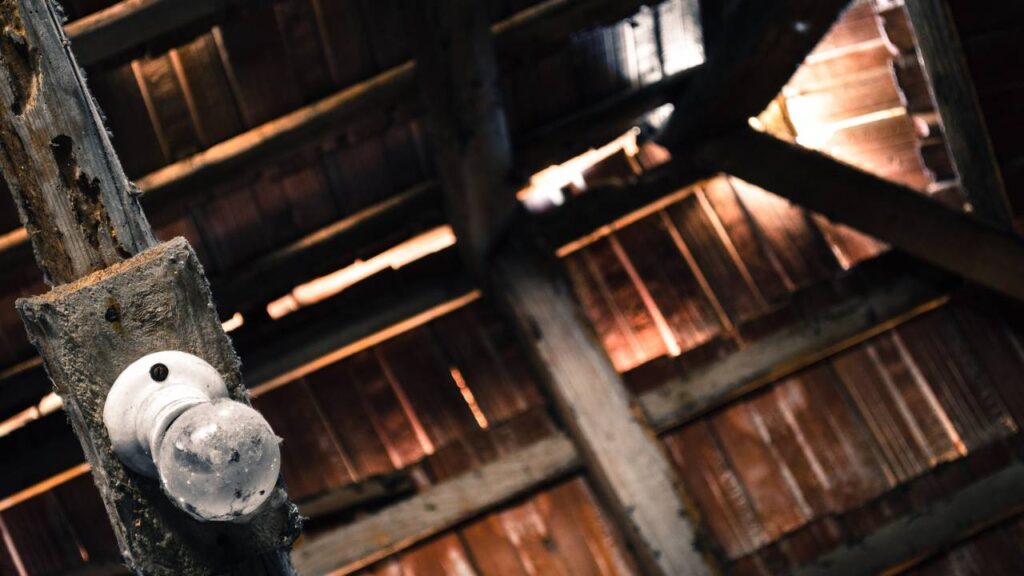When it comes to attic insulation, the right amount can make a huge difference in your home’s comfort and energy efficiency. While it’s easy to overlook, proper insulation in your attic can help maintain a consistent temperature throughout your home, reducing the strain on your heating and cooling systems. This not only keeps you comfortable but also cuts down on energy bills.
Different factors affect how much insulation you’ll need, including the climate in your region, the type of heating and cooling system you have, and the specific materials used in your home’s construction. Typically, colder climates require more insulation, while milder climates may need less.
Choosing the right type of insulation is also crucial. Common options include fibreglass, cellulose, and spray foam, each with its own set of benefits and installation considerations. With the right amount and type of insulation, you can create a more energy-efficient and cosy living space, no matter the season.
Understanding Attic Insulation and R-Value
To make your home energy-efficient, understanding attic insulation and R-value is crucial. This section explains these concepts and how they impact your home’s thermal performance.
The Basics of Insulation and Heat Transfer
Insulation slows the transfer of heat between the inside and outside of your home. In winter, it reduces heat loss, keeping your home warmer. In summer, it limits heat gain, keeping your home cooler.
Different types of insulation include fibreglass, cellulose, and foam. Each has properties that impact its effectiveness. Proper installation is key to optimal performance. Even the best insulation won’t work well if there are gaps.
Heat transfer occurs in three ways: conduction, convection, and radiation. Insulation primarily reduces conduction and, to a lesser extent, convection. It provides a barrier that slows the rate at which heat moves through your attic.
What Is R-Value and Why Does It Matter?
R-value measures insulation’s resistance to heat flow. The higher the R-value, the better the insulation’s thermal performance. It is crucial for maintaining a comfortable temperature in your home.
Different climates require different R-values. For example, a higher R-value is recommended in colder areas to prevent heat loss. Insulation’s R-value can degrade over time due to factors like moisture. It’s essential to check and maintain it regularly.
Insulation materials have varying R-values per inch. For example, fibreglass typically has an R-value between 2.2 and 2.7 per inch, while spray foam can have an R-value as high as 6.9 per inch.
Types of Attic Insulation Materials
Attic insulation materials come in various forms, each offering different benefits, costs, and installation methods. It’s important to choose the best type of insulation suited for your specific needs.
Fiberglass Insulation Options
Fiberglass insulation is a popular choice due to its affordability and effectiveness. It consists of fine glass fibres and comes in batts, rolls, or loose fill. Batts and rolls are ideal for DIY installations and can be easily cut to fit between stud spaces. Loose fill, on the other hand, is excellent for filling irregularly shaped areas and can be blown into place using a special machine.
Fiberglass is non-combustible, offering increased fire resistance compared to some other materials. Its R-value (a measure of thermal resistance) ranges from R-2.9 to R-3.8 per inch, making it an efficient insulator. Installation may require protective gear to avoid skin irritation from the fine glass fibres.
Cellulose Insulation Benefits
Made primarily from recycled paper products, cellulose insulation is an environmentally friendly option. It is treated with fire retardants, making it safe for use in homes. Cellulose is usually installed as loose fill and blown into attic spaces, ensuring good coverage and minimal gaps.
With an R-value of about R-3.2 to R-3.8 per inch, cellulose offers great thermal resistance. It also helps in soundproofing your attic. One advantage is its ability to fill small gaps and voids more effectively than some other types. To ensure optimal performance, professional installation is often recommended. Additionally, cellulose can absorb moisture, so moisture control is crucial.
The Advantages of Mineral Wool
Mineral wool insulation, also known as rock wool or slag wool, is made from natural rock or industrial waste products. It is known for its excellent fire resistance, being able to withstand temperatures over 1,000°C. Its R-value ranges from R-3.0 to R-3.3 per inch, providing good thermal insulation.
Mineral wool is available in batts or loose fill and is often praised for its soundproofing properties. It’s also water-resistant, preventing growth of mould and mildew. Like fiberglass, it requires protective gear during installation to avoid skin irritation. Mineral wool’s unique properties make it a versatile and effective option for many homes.
Exploring Foam Insulation Products
Foam insulation comes in two primary types: spray foam and rigid foam boards. Spray foam is highly effective at sealing gaps and providing a high R-value, typically R-6 to R-7 per inch. There are two categories of spray foam: open-cell and closed-cell. Open-cell is less dense and more flexible, whereas closed-cell is denser and provides a better moisture barrier.
Rigid foam boards are another option, made from materials like polystyrene or polyurethane. These boards offer excellent thermal resistance and are useful for adding insulation in tight spaces or over existing insulation. Foam insulation often requires professional installation for best results. Despite the higher cost, its superior insulating properties and moisture resistance make it a valuable investment.
Installation Techniques for Maximum Efficiency
To achieve maximum efficiency, it is important to focus on the method of installation and ensure you avoid common pitfalls. This not only optimises energy efficiency but also extends the longevity of your insulation.
DIY vs. Professional Insulation Installation
Choosing between DIY and professional installation depends on various factors. If you decide to do it yourself, ensure you have the right tools. Proper tools include protective clothing, masks, and staple guns. Spray foam insulation can be tricky; it’s best left to professionals due to the precision required for effective energy efficiency.
Professional installers are experienced and can offer warranties. They are proficient in handling different materials, such as fibreglass, cellulose, and rigid foam board insulation.
A professional will ensure all gaps are sealed to maximise insulation efficiency and provide proper ventilation, reducing the risk of mold and other issues.
Preventing Common Insulation Mistakes
Incorrect installation can lead to several problems, like inefficient energy use and moisture accumulation. One common mistake is compressing the insulation, which reduces its R-value and effectiveness. Ensure your material, whether batts or rolls, has enough fill and is not overly compacted.
Another mistake to avoid is obstructing ventilation paths. This can cause issues like overheating and mold growth. Properly installed vents are crucial for maintaining airflow. Avoid leaving gaps around electrical boxes and wiring.
Using the wrong insulation type in different parts of the attic can also lead to inefficiency. Rigid foam board insulation, for example, is suitable for areas requiring higher R-values and durability. Always choose the right materials for different spaces.
Insulating for Your Home and the Environment
Proper attic insulation helps you save money on energy bills while also playing a key role in reducing your household’s carbon footprint.
Reducing Heat Loss for Lower Energy Bills
Good insulation prevents heat from escaping your home during winter and keeps it cooler in summer. By reducing heat loss, you improve your home’s energy efficiency, leading to lower energy bills.
Poorly insulated attics often result in significant energy wastage. Heat rises and escapes through the roof without adequate insulation, forcing your heating system to work harder. This not only increases your energy costs but also places unnecessary strain on your heating equipment.
Types of insulation like fibreglass, cellulose, and spray foam offer varying levels of effectiveness. Choose a material that fits your budget and insulation needs. Proper installation is crucial for the best results, so consider consulting a professional.
Insulation’s Role in Reducing Carbon Footprint
Beyond financial savings, insulation also benefits the environment. Lower energy consumption means reduced demand for fossil fuels, directly decreasing your home’s carbon emissions.
Energy efficiency improvements in your home contribute to broader environmental goals. Less energy usage results in fewer greenhouse gases being released into the atmosphere. Attic insulation is one of the most effective ways to make your home more sustainable.
Moreover, some insulation materials themselves are eco-friendly, made from recycled or more sustainable sources. When selecting insulation, consider the full environmental impact, from production to installation. Making environmentally conscious choices aids in creating a healthier planet for future generations.
Additional Benefits of Attic Insulation
Attic insulation offers various practical advantages, enhancing your home’s comfort and safety beyond just energy efficiency. These benefits include improving soundproofing, fire resistance, air quality, and preventing issues like rot and mould.
Enhancing Soundproofing and Fire Resistance
Proper attic insulation helps to significantly improve soundproofing within your home. By adding an extra layer that absorbs sound waves, you can reduce noise pollution from outside, creating a quieter living environment. This is particularly beneficial if you live near busy roads or noisy neighbours.
In terms of fire resistance, certain types of insulation materials, like fibreglass or mineral wool, can slow down the spread of fire. These materials are inherently fire-resistant and can provide valuable time for escape and reduce the overall damage during a fire incident. Investing in such insulation materials increases your home’s safety and peace of mind.
Improving Air Quality and Preventing Rot
Good attic insulation contributes to better air quality in your home by sealing gaps that might otherwise allow dust, allergens, and pollutants to enter. Efficient insulation helps maintain cleaner air, which is crucial for those with respiratory issues or allergies.
Preventing rot and mould is another critical benefit. Proper insulation ensures your attic is well-ventilated, reducing the build-up of moisture that can lead to rot and mould growth. By keeping your home dry and well-insulated, you preserve structural integrity and improve health conditions within the household.
By focusing on these specific benefits, your attic insulation plays a crucial role in enhancing your home’s comfort, safety, and overall living environment.
Tailoring Insulation to Irish Homes
Ensuring your home in Ireland has the right attic insulation involves adhering to building regulations and adapting to the specific climate conditions.
Complying with Irish Building Regulations
In Ireland, attic insulation must meet specific standards. The Department of Housing, Local Government and Heritage has set guidelines to ensure homes are energy efficient. You need to achieve a U-value of around 0.16 W/m²K for attics.
U-value is a measure of heat loss, and a lower U-value means better insulation.
Use high-quality materials like fibreglass, rock wool, or cellulose. Each has benefits in terms of efficiency and cost. Consult an insulation specialist to choose the right material for your needs.
Proper installation is crucial. Ensure insulation is evenly distributed without gaps. In some cases, topping up existing insulation may be necessary to meet regulatory standards.
Solutions for Ireland’s Unique Climate Challenges
Ireland’s climate is damp and can be challenging for maintaining effective insulation. Moisture can reduce the effectiveness of insulation materials, leading to heat loss and potential damage.
Use vapour barriers to prevent moisture from seeping into insulation materials. This is particularly important in older homes that may have less protective infrastructure.
Consider using blown-in cellulose as it has good moisture resistance. Another option is spray foam, which can expand to fill gaps and provide a thorough seal against dampness.
Regular inspections of your attic insulation are essential. Check for signs of damp or mould.
In extreme cases, seek advice from an insulation specialist to address significant issues and keep your home energy efficient.


